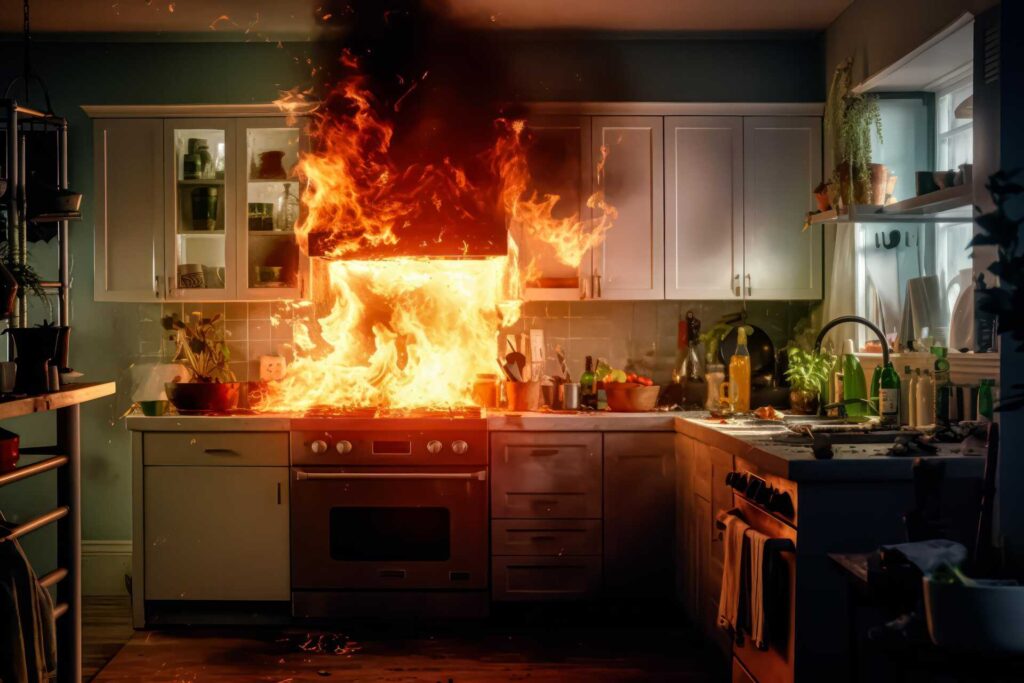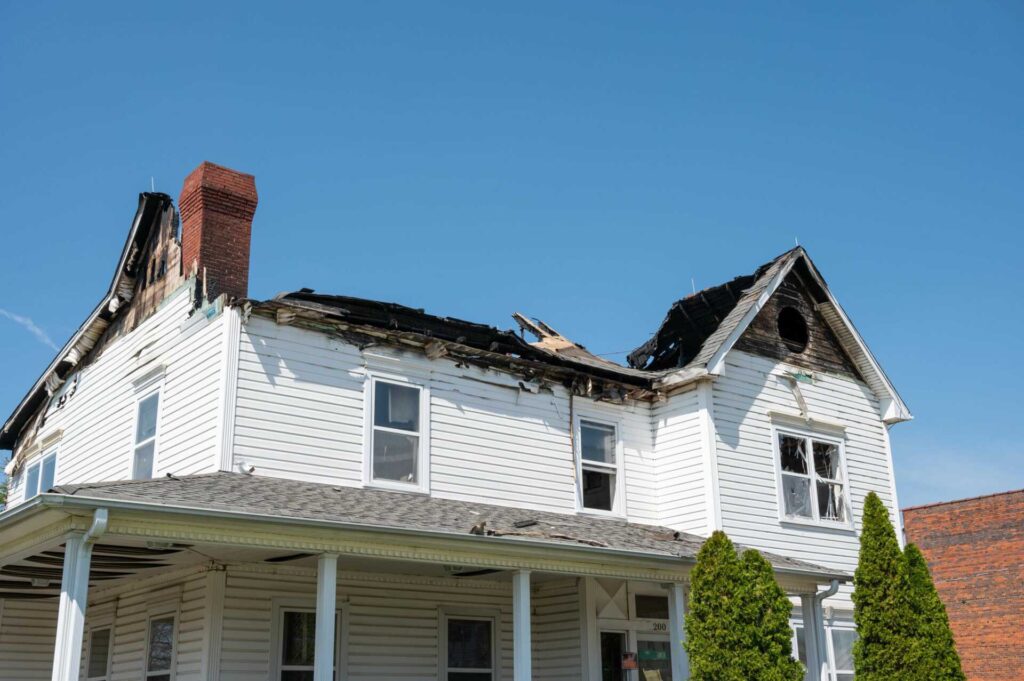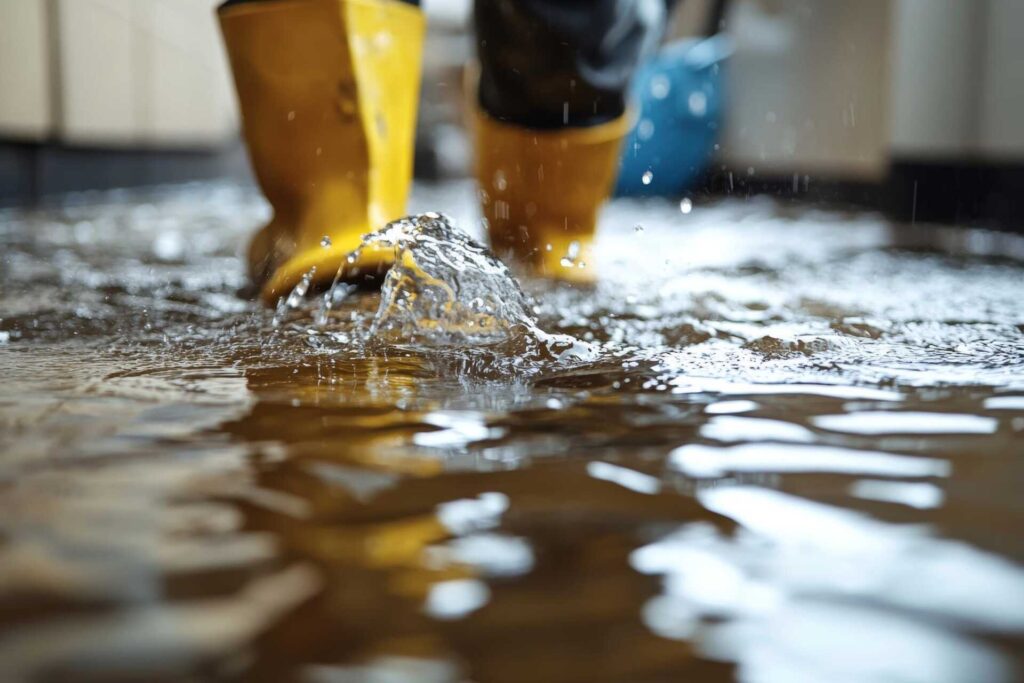
Contents
Odor-elimination Imagine standing in a room filled with the acrid scent of smoke and charred debris, remnants of a fire that once brought warmth. You know that fire damage cleanup isn’t just about cleaning—it’s about restoring your space and peace of mind. ; it’s a complex process that requires careful planning and execution. From assessing the extent of the damage to implementing effective odor-elimination techniques, each step matters. What strategies will ensure you restore your space safely and efficiently? Understanding these best practices could make all the difference in your recovery journey.
Key Takeaways
- Document all fire damage thoroughly to support insurance claims and track restoration progress.
- Ensure safety by wearing PPE and turning off power before entering affected areas.
- Remove debris systematically, sorting items into recyclable, salvageable, and waste categories.
- Use ventilation, baking soda, and vinegar solutions to effectively neutralize smoke odors.
- Repair or replace damaged materials with high-quality, fire-resistant products for improved safety.
Assessing Fire Damage
Assessing fire damage is a crucial first step in the cleanup process. You need to approach this task methodically, as the extent of damage can vary widely depending on the fire’s intensity and duration.
Start by documenting everything. This damage assessment isn’t just for your peace of mind; it plays a vital role in filing insurance claims later on.
Once you’ve ensured your safety, begin by examining structural elements like walls, ceilings, and floors. Look for signs of charring, warping, or discoloration.
Don’t overlook hidden areas; often, smoke and heat spread to parts of your home you may not immediately think to check.
Next, assess the contents of your home. Furniture, electronics, and personal items can suffer smoke damage even if they appear intact.
Take photos and make a detailed list of everything affected. This documentation will be invaluable when you file your insurance claims.
It’s also wise to note the materials involved in the fire. Different materials can produce various types of damage, influencing your cleanup strategy and insurance coverage.
Finally, remember that you’re not alone in this process. Many people have faced similar challenges and can offer support and advice.
By being thorough in your damage assessment, you’re preparing for the next steps in cleanup and fostering a sense of community and resilience in the face of adversity.
You’ve got this, and taking these initial steps will set you on the right path to recovery.
Safety Precautions to Take
When dealing with fire damage cleanup, taking essential safety precautions is paramount to protect yourself and others. Your safety should always come first, so equip yourself with the right knowledge and tools. Start by ensuring you have personal protective equipment (PPE) like gloves, masks, goggles, and sturdy boots. This gear will shield you from harmful debris and smoke particles.
Here’s a quick reference table to guide you through important fire safety precautions:
| Safety Measure | Description | Importance |
|---|---|---|
| Wear Personal Protective Equipment (PPE) | Use gloves, masks, goggles, and boots | Protects you from harmful substances |
| Ensure Adequate Ventilation | Open windows and doors to allow fresh air in | Reduces smoke inhalation risk |
| Avoid Electrical Hazards | Turn off power before entering affected areas | Prevents electrocution and fires |
Before you begin any cleanup, assess the area for structural damage and ensure it’s safe to enter. If you have doubts, consult a professional. Avoid using water on electrical fires; instead, use a fire extinguisher rated for that type.
Always keep a first aid kit on hand and have emergency contacts readily accessible. By following these safety precautions, you can help create a safer environment for yourself and others during the fire damage cleanup process. Remember, your well-being is crucial, and taking the right steps will make a significant difference.
Debris Removal Strategies
After ensuring your safety, the next step in fire damage cleanup involves effective debris removal strategies. You’ll want to approach this task methodically, as it’s crucial to restore your space while minimizing further risks.
Start with debris sorting. Gather all the charred materials, broken furniture, and any non-salvageable belongings. Use sturdy gloves and a mask to protect yourself from sharp objects and hazardous residues. Categorize the debris into different piles: recyclable materials, salvageable items, and waste. This step streamlines your cleanup process and helps in identifying what can be reused or recycled.
Once you’ve sorted the debris, focus on debris disposal. Check with your local waste management service for specific guidelines regarding hazardous materials, as some items may require special handling. For general waste, you may need to rent a dumpster to ensure efficient removal.
As you dispose of the debris, keep your surroundings organized to avoid accidents and maintain a clear path for movement.
If the volume of debris feels overwhelming, consider enlisting the help of professionals. They possess the expertise and equipment needed for a thorough cleanup, allowing you to focus on recovery.
Smoke Odor Elimination Techniques
How can you effectively eliminate the lingering smoke odor after a fire? It’s essential to tackle smoke removal promptly to restore a sense of comfort in your space.
Start by ventilating the area. Open windows and doors to allow fresh air in, which aids in reducing the odor intensity. You can also use fans to help circulate air and push out the stale smoke.
Next, consider using odor neutralization techniques. Baking soda is a powerful ally; sprinkle it on carpets and upholstery, let it sit for several hours, and then vacuum it up. This will absorb much of the smoke odor.
For hard surfaces, a mixture of vinegar and water can work wonders. Wipe down walls, furniture, and other surfaces with this solution, as vinegar neutralizes odors effectively.
If the smell persists, you might want to invest in an ozone generator or air purifier. These devices can help break down smoke particles in the air, providing a deeper level of odor neutralization. However, ensure the area is unoccupied while using these devices, as ozone can be harmful when inhaled.
Lastly, don’t forget to wash textiles. Curtains, clothing, and linens can trap smoke odor, so wash them thoroughly or consider professional cleaning services if necessary.
Restoring Affected Areas
Restoring affected areas after fire damage requires a systematic approach to ensure safety and effectiveness. You’ll want to assess the extent of the damage before diving into the restoration process.
Begin by wearing protective gear, including gloves and masks, to shield yourself from hazardous materials. Identify the affected surfaces, such as walls, ceilings, and flooring, and document the damage for insurance purposes.
Once you’ve conducted your assessment, start removing debris and charred materials. This is crucial as lingering soot and ash can lead to further deterioration. For hard surfaces, use restoration materials specifically designed for fire damage cleanup, such as specialized cleaners and sealants. These products help remove stains and restore the integrity of the affected surfaces.
Next, focus on repairing or replacing damaged structural elements. If drywall is compromised, it may need to be replaced entirely. Use high-quality restoration materials to ensure that repairs blend seamlessly with the existing structure.
Don’t forget to address hidden areas, like behind cabinets or under flooring, where smoke damage might linger.
Finally, consider re-painting and re-sealing affected surfaces. Opt for fire-resistant paints and sealants to add an extra layer of protection. This will restore the appearance of your space and enhance safety in the future.
Wrap-Up
In the aftermath of a fire, embracing a meticulous approach to cleanup can help restore your space to its former glory. By methodically assessing damage, prioritizing safety, and employing effective debris removal and odor neutralization techniques, you can breathe new life into affected areas. While some tasks may seem daunting, remember that enlisting professionals can elevate your restoration efforts, ensuring your home emerges from this challenging experience with renewed vigor and resilience.



